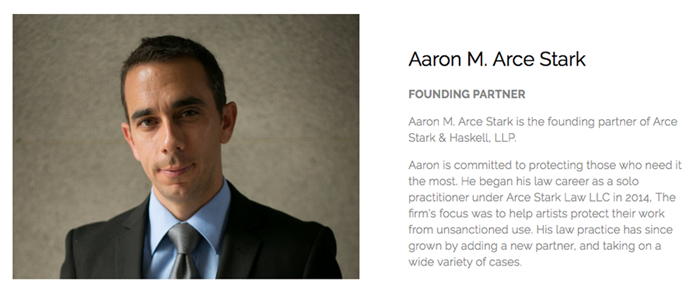Can I photograph this photograph?
"Can I photograph the rings on top of a photo from this book?"
We asked copyright attorney Aaron Stark about the issues of copyright infringement regarding using someone's copyrighted work as a background of our own photographs.
Here's that he said:
This is based on federal United States Copyright Law. Other countries may have different laws.
In every case, whether your reproduction of someone else's work within your work constitutes copyright infringement will likely be a fair use determination, and a judge would apply the 4 fair use factors:
- the purpose/character of the use;
- the nature of the copied work;
- the amount of the work used, and
- the effect on the market for the copied work.
A judge would consider in each case whether the use "transformed" the copied work in any way, or was merely capitalizing on someone else's work.
Below we briefly review four hypotheticals that often come up with photographers.
1. Is it copyright infringement if I photograph the wedding rings on top of a page in a book or magazine?
It depends on how much of the magazine page was included as a background. The more the background is just colors, generic designs, or patterns, the more likely the use is to be fair. The more the background is recognizable as a page from a magazine, and the more specific images and text unique to the magazine are used, the less likely the use is to be fair.
2. Is it copyright infringement if I photograph my couple in front of an outdoors wall mural?
This depends strongly on the "nature of the use." In general, photographs that include a copyrighted work will be considered fair if they are taken and displayed for purposes of comment, criticism, scholarship, news, or education, and works will *not* be considered fair if they are taken for commercial purposes.
See the recent settlement between American Eagle Outfitters and the street artist Aholsniffsglue: ARTICLE
American Eagle used images of Aholsniffsglue's murals in advertisements, which is a clear commercial use, and thus unlikely to be fair. Fair use is designed to stimulate artistry and innovation - using someone else's artwork for an ad is not innovation, it's theft. If you are taking the photo because you are a professional photographer hired by the couple to photograph them, then despite the fact that your use has a 'commercial purpose' - i.e. you will be paid for taking this photo - the photo would nevertheless probably be fair, because it is intended as a private, artistic depiction of two private citizens and not intended as a piece of intellectual property to be exploited on the open market.
The same applies for public sculptures.
3. Is it copyright infringement if I take a humorous photo that is juxtaposing my subjects (people) with art that is hanging on the wall?
Again, it would depend on the nature of the use, and whether the photograph was intended as an advertisement or somehow otherwise commercial speech, but in general, because you are juxtaposing the subjects next to the artwork in a way that adds humor and comment to the artwork, you have probably "transformed" the work enough to be considered fair. The key thing to understand is that your photograph is not merely a glorified copy of the artwork, but is a new and distinct artwork that is built on top of the old. If you went into the Louvre and took a selfie with the Mona Lisa wherein you imitated her distinctive expression and stance, that selfie would not be a mere copy of the Mona Lisa, but would be an entirely new piece, with a new context and new comment. (NB: you cannot infringe the Mona Lisa's copyright, because it was created centuries before copyright laws were invented and thus is not covered.)
4. Is it copyright infringement if take photos of my subjects (people) in a room that has wall art but the art has nothing to do with the subjects?
This is much the same determination as the above question, but even more likely to be fair. The question is always whether the photograph you are taking is a glorified copy of the artworks you are photographing, or whether your photograph transforms those works in some way - and here, the fact that you have *many* artworks all in the same room alongside your subjects transforms the artworks in a way that makes your photograph probably fair. You are not merely copying the works in a way that would harm the artist's ability to make money from their art; you are creating a whole new tableau, an artistic vision of your own, that only happens to include copyrighted artworks.

For specific questions, please contact Aaron directly at Arce Stark & Haskell LLP
More...